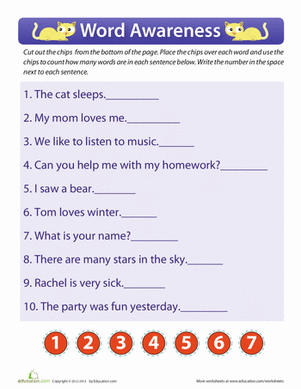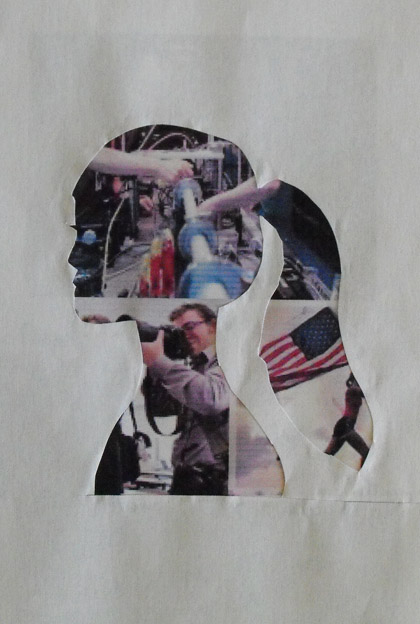Activity
Learn Self-Awareness Through Deep Relaxation
Deep relaxation is a great way to create the conditions for learning by helping students let go of tension and worry. Practicing in this way, students learn to self-soothe, regulate their behavior, and find relief from stressful situations by focusing attention on their breath and body.
What You Need:
What You Do:
- Explain that we are going to take some time to relax our bodies and minds. Share that doing this can help us feel peaceful, rested, and ready to learn.
- Have students lay down on their backs. Make sure they are not touching each other and are comfortable.
- You may use a mindfulness bell or sound a chime at the beginning and end of the deep relaxation to help students maintain a more relaxed state. Begin by telling students to get comfortable on their back. Ask them to congratulate themselves for taking important time to relax.
- Once they are in a comfortable position, ask them to gently close their eyes and, if they can, bring a half smile to their face.
- Tell them to bring awareness to their breathing. Say that they can place one hand on their chest and one on their belly to feel their breath if it is helpful. With each breath in and out, have them silently count to themselves. Tell them to take up to five mindful breaths and as they breathe, feel their whole body on the floor and sink deep into the ground. Ask them to imagine they are weightless, floating on water or a fluffy white cloud. Reassure them that they have nowhere to be but relaxing with their breath—no worries, no tension, just breathing.
- Now ask them to bring awareness to their arms. As they breathe out, tell them to relax their arms all the way down to their hands. As they breathe in, ask them to bring awareness to their hands, focusing first on their right. Then have them bring awareness to each finger. Repeat with the left.
- Ask them to breathe deeply and send love and gratitude to both of their hands. Remind them that our hands make it possible for us to draw, play sports, cook, and so much more. Our hands are very precious.
- Now it is time to move on to the legs. As they breathe out, ask them to relax their legs completely. As they move their awareness down their right leg, tell them to relax from their thighs to their knees to their calves, down to their ankles and finally their right foot. Next, relax each toe one by one. Repeat with the left leg and wiggle all toes as they relax both feet. Remind them that their feet bring them so much joy by allowing them to play, dance, and more. Have them send love and gratitude to their feet.
- Now have them move up their body to the top of their head. Breathing in and out, have them take a few breaths as they relax the muscles around their head. Breathing in, ask them to relax their eyes.
- As they breathe in, tell them to bring awareness to their shoulders. As they breathe out, tell them to release and relax their shoulders. Then have them focus again on the top of their head. Have them take a few breaths to relax the muscles around their head. Now, breathing in, tell them to relax their eyes.
- Have them next bring awareness to their mouth. Perhaps they still have that gentle half smile on their face. Ask them, "Did you know that smiling releases the tension in the hundreds of muscles in your face?" Tell them to feel the tension release as they smile and silently thank their mouths for all it allows them to do—eat, sing, and more.
- Lastly, as they breathe in, instruct them to bring awareness to their heart. Tell them that our hearts work so hard 24/7, but we often forget to love them back. Tell them to silently thank their heart for all it does.
- Tell them to bring awareness to their breathing. They may now stretch if they'd like, and when they are ready, they should slowly and mindfully stand up.
- In deep relaxation, you can use any part of the body: the hair, the ears, the nose, lungs, internal organs, the digestive system, or any part of the body that needs healing and care. Just have students embrace each part of their body with mindfulness and gratitude as they hold their awareness while breathing in and out.
- Complete the Deep Relaxation Reflection Questions worksheet.
About the author: Meena Srinivasan, MA, National Board Certified Teacher, is a leader in the fields of Mindful Awareness Practices (MAP) and Social and Emotional Learning (SEL). She is the author of Teach, Breathe, Learn: Mindfulness In and Out of the Classroom (Parallax Press, 2014) and SEL Everyday: Integrating Social and Emotional Learning With Instruction in Secondary Classrooms (Norton, 2019).
Related learning resources

Mindfulness: Deep Relaxation
Worksheet
Mindfulness: Deep Relaxation
In this worksheet, children grow roots, branches, and leaves as they practice deep relaxation — then design a relaxation technique of their own.
Preschool
Worksheet

Deep Relaxation Reflection Questions
Worksheet
Deep Relaxation Reflection Questions
This worksheet will help students reflect on their deep relaxation experience.
Kindergarten
Worksheet

Mindfulness: Deep Relaxation
Lesson plan
Mindfulness: Deep Relaxation
Deep relaxation in school? Yes, it is possible!
Preschool
Lesson plan

Big Self-Portrait
Activity
Big Self-Portrait
Help your child explore their imagination and self-image with a larger-than-life-size self-portrait!
Kindergarten
Activity

Glossary: Phonological Awareness
Worksheet
Glossary: Phonological Awareness
Use this glossary with the EL Support Lesson: Phonological Awareness.
Kindergarten
Worksheet

Phonological Awareness Explained
Worksheet
Phonological Awareness Explained
Use this handy visual to help you understand the concept of phonological awareness.
Kindergarten
Worksheet

Word Awareness
Worksheet
Word Awareness
Build a great reader by practicing word awareness. Kids will put a marker next to each word and count up the total words in the sentence.
Kindergarten
Worksheet

Paper Self-Portraits
Lesson plan
Paper Self-Portraits
Students will use paper to create eye-popping texture and form with these self-portraits.
1st Grade
Lesson plan

Vocabulary Cards: Phonological Awareness
Worksheet
Vocabulary Cards: Phonological Awareness
Use these vocabulary cards with the EL Support Lesson Plan: Phonological Awareness.
Kindergarten
Worksheet

Favorite Things Self-Portraits
Lesson plan
Favorite Things Self-Portraits
Let your students express their personalities with these self-portrait paintings!
Preschool
Lesson plan

Self-Portrait Collage
Activity
Self-Portrait Collage
Help your ambitious kindergartener imagine her bright future by creating a self-portrait collage of jobs she's interested in.
Kindergarten
Activity

Draw Your Self-Portrait
Activity
Draw Your Self-Portrait
This life-sized self-portrait activity encourages children to explore what makes them special, and then portray it with arts and crafts!
Kindergarten
Activity



